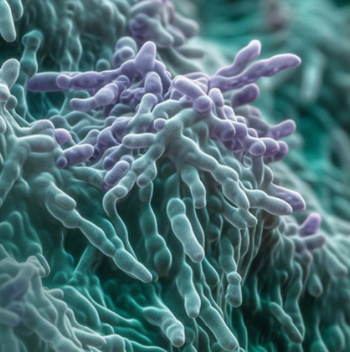
Antimicrobial Stewardship
Latest News
Latest Videos

CME Content
More News

Akhila Kosaraju, MD, addresses overcoming key challenges in antibiotic development using AI, a nonprofit model, and supportive policies.

Amanda Jezek, of the Infectious Diseases Society of America (IDSA), offers some insight on the prospective bill in Congress, as well as other AMR initiatives the organization is involved in.

Insights from Catherine Bertrand Ferrandis, DVM, on the role of One Health and interdisciplinary collaboration.

After Diane Shader Smith lost her daughter, Mallory, to a multidrug resistant infection, she turned her personal tragedy into a mission designed to inform people about antimicrobial resistance (AMR), and have the public coalesce around this expanding medical issue.

Results in about 5.5 to 6 hours, employing advanced technology to detect bacterial growth and minimum inhibitory concentration.

With antimicrobial drug shortages expected to continue globally, developing mitigation strategies is essential to prevent complications, including antimicrobial resistance.

The most recent National Healthcare Safety Network annual survey shows that 78% of US hospitals now have sepsis committees, an increase from 73% in 2022.

As with other metallo-β-lactamases, NDM is capable of hydrolyzing nearly all β-lactams, including carbapenems, and the search for the proper antimicrobials is challenging.

Clinicians provide an overview of intraamniotic infections and offer treatment strategies for these challenging infections.

Understanding the potential and limitations of new Acinetobacter baumannii active therapies.

A focus group study reviewed provider practices to learn more about patient management and explore the potential to follow up with clinicians on important takeaways.

Penicillin continues to be an important therapy for treating syphilis. Here is a review of the literature in comparing one of the first antibiotics to non-penicillin treatments for non-neurological syphilis.

4-way trial assesses non-prescription interventions, including 2 nasal sprays, for reducing seasonal respiratory illness and related antibiotic use.

The study examines how pathogenicity-related gene clusters integrate into Salmonella's genome to affect disease ability.

Investigators found that 10 days of antibiotics is common for acute otitis media despite that 5 to 7 days is advised by US and international guidelines.

This updated guidance incorporates new treatment strategies and recommendations based on the latest data on antimicrobial resistance.

There is a high potential for ActivePure Medical’s technology to enhance patient safety and reduce healthcare costs by minimizing harmful pathogens in complex healthcare environments.

Analyzing data from over 4.6 million sinusitis cases, the study emphasizes the need for focused efforts to improve adherence to treatment guidelines and ensure antibiotics are used correctly.

The World Health Organization (WHO) warns of a moderate global risk to the presence of the pathogen, hypervirulent Klebsiella pneumoniae (hvKp) sequence type (ST) 23, as it has been reported in at least 1 country in all 6 WHO Regions.

Omadacycline (Nuzyra) maintained its potency over time and did not show a decrease in effectiveness.

The third and final episode in our series looks at what is in the pipeline as well as a discussion around FDA guidance.

SHEA supports funding to address antimicrobial resistance in light of heightened challenges during the COVID-19 pandemic.

A pilot study looked at offering this form of pre-exposure prophylaxis (PrEP) to a select population to see if it could be effective in preventing sexually transmitted infections (STIs).

Paratek Pharmaceuticals has announced results from a Phase 3 study of omadacycline (Nuzyra), demonstrating its non-inferiority to moxifloxacin in treating moderate to severe community-acquired bacterial pneumonia.

Participants using nasal sprays experienced significantly shorter illness durations and reduced antibiotic usage compared to those receiving usual care.


























































































































































































































































































